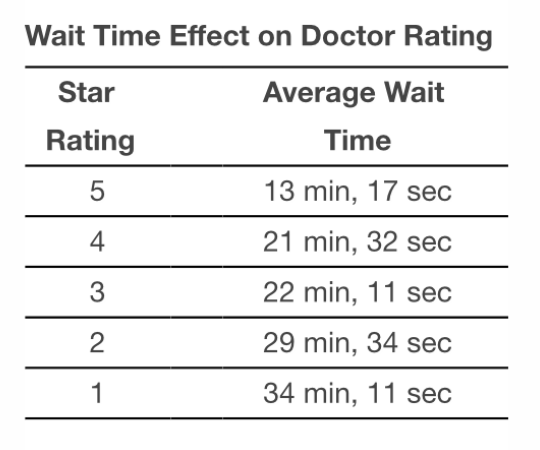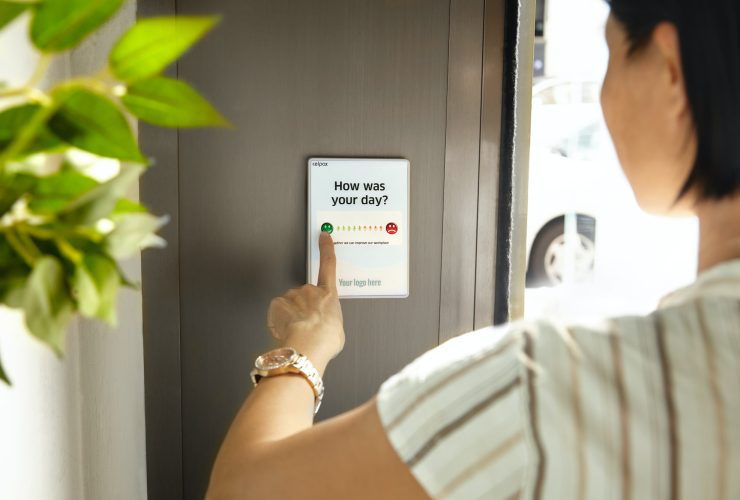What Do Patients Want from their Doctors? 3 Things.
Quality of care and patient outcomes will always matter – but in 2020, the #1 factor that dictates how well a practice will grow is patient experience. But to offer a better patient experience, we first have to answer the question: what do patients want from their doctors?
Episode Transcript: What Do Patients Want from their Doctors?
Hello everybody, and welcome to the Medical Marketing Podcast from Messenger – the show where we give physicians and practice marketing managers actionable tips and advice to help improve your marketing, grow revenue, and take patient experience to the next level.
I’m your host, Crawford Ifland, and this week we’re going to be talking about patient experience and what patients really want from their doctors. We’ll look at how patients perceive your practice brand and what you can do to influence their perceptions and improve their experience.
Thriving healthcare practices are built upon two things: how visible they are, and how they are perceived by their patients. Quality of care still matters – and it always will – but more and more, the experience patients have at a practice will dictate how well that practice will do in the future.
So if you want to understand patient perceptions and enhance your practice’s reputation, let’s dive in.
What is a Healthcare Brand?
Before we dive into what patients want from their doctors, we need to talk about healthcare brands.
There are lots of misconceptions about brands in general, not just in healthcare. Your brand is much more than your logo or your website – it’s far more comprehensive.
At Messenger, we like to define a brand as the sum of all touchpoints patients have with your practice.
When we use that definition, your brand becomes much more than just a logo.
- Your brand is the way your receptionist answers the phone – and how many times it rings before they pick it up.
- Your brand is the amount of time you spend with each patient – and whether or not they feel you spent enough time with them.
- Your brand is how easy it is for a patient to schedule an appointment – and how many days (or weeks) they have to wait until they can see you.
- Your brand is how many patients refer you to their friends and family.
It’s important to note that your practice brand does not exist outside of the minds of your patients. Branding is 100% dependent on what your patients think of you and how they feel about you. In healthcare branding, patient perception is everything.
Amazon CEO Jeff Bezos says that ”Your brand is what other people say about you when you’re not in the room” – and he’s spot-on.
So if you want to improve your practice brand, you need to be able to answer that question: what do patients want from their doctor? That’s what we’ll cover next.
What Do Patients Want from their Doctors?
The question of what patients want from their doctors is complicated. Not all patients are the same, and expectations will vary from patient to patient.
But expectations are incredibly important.
Patient expectations influence patient experience, so understanding general trends and setting expectations correctly can go a long way.
In our research on patient expectations and patient experience, we uncovered three key areas of patient experience and some expectations that patients have at each step: pre-appointment, in your office, and during consultation with the doctor. Let’s break each of them down:
Pre-Appointment, Patients Want Convenience
Before their appointment, the number one thing patients are looking for is convenience. Comparing providers and scheduling an appointment is already a daunting task for most, so providing convenient options can go a long way.
Just take a look at these stats:
- 81% of patients want the ability to schedule an appointment for themselves on the Internet
- 68% of patients are more likely to choose a doctor which allows them to book, cancel, or change appointments by themselves online
- 59% of Gen Y patients said they would switch healthcare providers for one with better online access
- And when it comes to keeping in touch, 70% of patients would choose providers who send emails or text messages when it’s time for preventive or follow-up care
More and more, patients want to take matters into their own hands.
Yes, you will always have patients who want to call in and talk to someone, but more patients want the option to self-schedule – it’s just more convenient.
If you cater to younger generations, this becomes even more important. So prior to their visit, make sure you’re giving patients convenient options to schedule an appointment, communicate with you, and take matters into their own hands.
In Your Office, Patients Want Clarity
Going into a doctor’s office is still a scary experience for many people, especially if there’s any element of uncertainty. Patients’ minds are flooded with questions: What’s wrong? What are my options? Are these even good options? How much is this going to cost?
Anything you can do to set patients’ minds at ease and cater to their needs will go a long way.
And in your office, patients want clarity – clarity on things like their expected wait time, next steps for their appointment, and what they can expect in terms of cost.
If you can provide patients clarity on what to expect from their appointment, you’ll be delivering a better experience. You may not be able to change the dynamics of running a busy practice, but you can let them know what to expect…and if their expectations align with the reality of your practice, those questions that loom large in their minds will shrink a bit, and they’ll begin to have a better experience.
Take this statistic, for example: 84% of patients believe wait times are very important to overall experience, and 43% of patients say wait time is the most frustrating part of a doctor visit.
So why not just work to shorten wait times?
Well, for most, it might not be feasible. Shortening wait times either means hiring more doctors, accepting fewer patients, or spending less time with each patient (which is already a chief complaint among patients).
A better strategy is to provide clarity with patients and set expectations for their appointment. 53% of patients say that being aware of appointment length ahead of time would change their attitude about the appointment.
Studies have shown that longer wait times influence the ratings patients give their physicians online – and that’s not the only reason they’re important.

30% of patients have walked out of an appointment due to a long wait time, and 1 in 5 patients have changed doctors because of consistently long wait times – so yes, wait time is important.
But while none of us really like to wait longer than we have to, it’s not the wait time itself that leads to problems – it’s the gap between a patient’s expectations and reality that hurts patient experience.
Cost is another element of patient expectations that is important to address.
According to Accenture, 65 percent of patients say transparency about the cost of healthcare services is very important or critically important to their overall patient satisfaction. And while you can’t always control the cost of healthcare services, especially in the age of declining reimbursements, you can help educate patients about cost and what to expect from the get-go.
So when patients are in your office waiting to see the doctor, make sure you’re providing clarity and setting expectations appropriately.
During Consultation, Patients Want Compassion
Ok, so the time has come for the patient to finally see the doctor. What do they expect?
According to research (and a fair amount of common sense), during consultation, patients want compassion. Patients want to feel like they’ve been heard and that the doctor spends adequate time with them.
Yes, you must document everything in your EMR, but patients need to feel understood and heard.
Every doctor I know got into medicine out of a love for people and a desire to help people. Many doctors have fantastic people skills – and people skills and active listening are differentiating factors in patient experience.
According to the Physicians Foundation Patient Survey, 77% of patients wished their doctors would listen more. 96% of patients said that physicians should strongly advocate for their patients, but only 79% of patients think their doctors currently do so.
And 90% of patients agreed that the patient-physician partnership is the most essential element in a quality healthcare system.
And listening to patients and showing compassion isn’t just good for patient experience – it can actually make patients feel better. According to a study by Stanford University, reassurance and compassion from healthcare providers can influence patient mindsets, affect health outcomes, and promote healing.
The study’s author, Dr. Alia Crum, has this to say:
“Going to the doctor is largely a psychological experience… Often we simply want to be reassured that what we are experiencing is ‘normal’ and will go away. And yet, the response we often get is complicated diagnoses, expensive medications, and added uncertainty…all of which may not only fail to harness psychological aspects in healing but may actually generate mindsets that could make us feel worse.”
So when a doctor is treating a patient, it’s not just about the medicine. It’s about the whole person – their thoughts, their feelings, and the relationship between the physician and the patient. Showing compassion as a doctor and getting the relationship right is one of the best ways to improve patient experience.
Recap
So, let’s recap what we learned today:
- Prior to their appointment, patients desire convenience above all else. When you make it easier for patients to contact you, schedule an appointment, and get the information they need, you get the relationship off on the right foot.
- When a patient comes into your office for their appointment, they desire clarity above all else. Setting expectations about wait time, cost, and other elements of the visit goes a long way. You may not be able to change any or all of these factors, but communicating effectively narrows the gap between expectations and reality – and it’s that gap that influences patient experience.
- During the appointment itself, patients desire compassion above all else. Again, you may not be able to change the facts of their case, but you can change how you listen, how you relate to them, and ensure that they feel known and heard. It’s these intangible factors that influence their attitudes, improve their experience, and lead to a more positive perception of your practice brand.
Next Week…
Well, that’s all for this week’s episode of the Medical Marketing Podcast – thanks for listening.
Whether you’re new to the show or have been listening for a long time, check out our website at www.messenger.md. We’re always sharing helpful resources and know-how to help you improve your practice marketing, grow revenue, and take your patient experience to the next level.
That’s all for today’s episode – I’m Crawford Ifland. See you next week.







